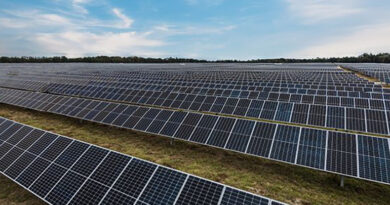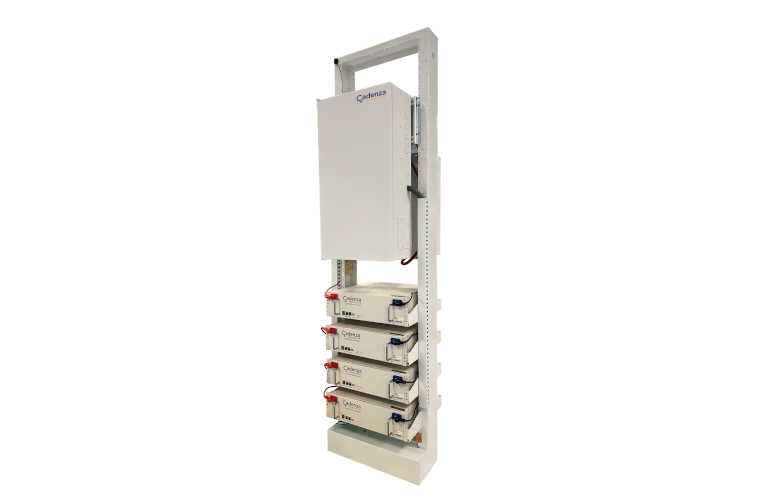Long-term ITC extension, standalone storage and direct pay: What’s in the IRA
The Inflation Reduction Act gives the solar + storage industry long-term incentives and market certainty. Here’s what’s in it.
- Residential
- Residential solar ITC: 30% until stepdown starts in 2033
- Residential storage ITC for batteries over 3 kWh: 30% until stepdown starts in 2033
- Commercial
- Commercial solar projects: 30% ITC until 2025. Credits in 2025 and later are contingent on whether the Dept. of Treasury determines carbon reduction goals are met
- Prevailing wage and apprenticeship requirements to receive full 30%
- These requirements take effect for projects that begin construction 60 days after the Dept. of Treasury defines the metrics
- These requirements do not apply to projects under 1 MWAC
- Commercial storage ITC for batteries over 5 kWh that are placed in service after 2022: 30% ITC until 2025. Credits in 2025 and later are contingent on whether the Dept. of Treasury determines carbon reduction goals are met
- Prevailing wage and apprenticeship requirements to receive full 30%
- These requirements take effect for projects that begin construction 60 days after the Dept. of Treasury defines the metrics
- ITC adders available
- 10% for domestic content usage
- 10% for siting in “energy communities”
- Up to 10% for projects smaller than 5 MWAC located in low-income communities or tribal lands
- Up to 20% for projects smaller than 5 MWAC that qualify as low-income residential building or economic benefit systems
- Projects under 5 MWAC can receive ITC for interconnection costs
- Commercial solar projects can choose whether to receive the PTC or ITC
- PTC is currently at $0.026/kWh for 2022 and rises with inflation
- Credits are transferable after 2022, potentially allowing individuals to invest in projects
- Prevailing wage and apprenticeship requirements to receive full 30%
- Direct pay
- Available for nonprofit entities, state or local governments, the Tennessee Valley Authority, rural electric cooperatives or tribal governments
- No direct pay available to residential projects
- Manufacturing
- Incentives for solar panels, trackers, inverters, batteries and critical minerals
- Clean Vehicle Credit
- Available until end of 2032
- Used electric vehicle: $4,000 tax credit or 30% of sale price
- Vehicle model must be two years earlier than calendar year in which you’re buying
- Vehicle must be less than $25,000
- Annual income requirements:
- Joint tax return <$150,000
- Head of household tax return <$112,300
- Single taxpayer return <$75,000
- New electric vehicle: $3,750 tax credit for North American-made vehicles
- Vehicle cost requirements:
- Vans <$80,000
- SUVs <$80,000
- Pickup trucks <$80,000
- Cars <$55,000
- Annual income requirements:
- Joint tax return <$300,000
- Head of household tax return <$225,000
- Single taxpayer return <$150,000
- Vehicle cost requirements:
- Prevailing wage and apprenticeship requirements to receive full 30%
- Commercial solar projects: 30% ITC until 2025. Credits in 2025 and later are contingent on whether the Dept. of Treasury determines carbon reduction goals are met
The Inflation Reduction Act, packed with incentives for the solar + storage industry, was passed by the House of Representatives on August 12 and is expected to be signed by President Joe Biden in the coming days. Solar advocates believe the sector will boom thanks to the long-term certainty provided by this law.
“The changes to the ITC are monumental. They are things that will create a longer runway for clean energy growth in America,” said SEIA president and CEO Abigail Ross Hopper. “The ITC, as we know, is the No. 1 policy driver in the solar industry and has helped us build the industry to what we have today.”
Here’s what’s in the IRA.
Residential solar incentives
The personal income tax credit for solar power is raised to 30% and extended by 10 years, with stepdown beginning in 2033. Standalone residential batteries over 3 kWh, purchased after December 31, 2022, are also eligible for the 10-year, 30% ITC. There is no direct pay option for residential projects.
Commercial solar incentives
Commercial solar incentives in the IRA fall into two categories based on project size.
Commercial projects under 1 MWAC can receive the 30% ITC with no prevailing wage or apprenticeship requirements to receive the full benefit.
Commercial projects over 1 MWAC can receive the 30% ITC if prevailing wage and apprenticeship metrics are met. These labor requirements will take effect for projects that begin construction 60 days after the Dept. of Treasury defines the metrics. Companies that begin construction before the 60 days are over are exempt from meeting the requirements to reach the full 30%.
After the 60-day period, commercial projects over 1 MWAC will receive a 6% base credit, with 24% more available if projects meet those additional labor requirements to make a total of 30%.
Both prevailing wage and apprenticeships are closely based on union labor. A prevailing wage is set by states and is the basic hourly rate of wages and benefits paid to a number of similarly employed workers in a given geography, according to The Center for American Progress. Some states do not have established prevailing wages, according to Pari Kasotia, senior director of policy at DSD Renewables, so the Dept. of Labor will need to create guidance for those scenarios.
Apprenticeships too are typically union-led programs. The IRA dictates what percentage of a project’s workforce must be made up of apprentices, starting with 10% for projects beginning construction in 2023, increasing to 12.5% in 2024 and 15% in 2025.
“I cannot underscore [enough] the need to ensure appropriate levels of training programs to meet the growing demand for labor that would come from this bill,” Kasotia said.
After 2025, the continuation of the commercial solar and storage ITC for the following seven years is contingent on whether the solar sector and electric sector meet the Treasury Dept.’s greenhouse gas emission goals. The credits will continue until the electric sector’s emissions have dropped 75% below 2022 levels.
Additional commercial ITC provisions
Commercial projects of any size are also eligible for a number of adders that can take that credit even higher. Those adders include:
- 10% for meeting domestic content standards, meaning a certain percentage of any manufactured product is made in the United States;
- 10% for siting projects in “energy communities,” meaning places with brownfield sites or coal plant closures;
- Up to 10% for projects smaller than 5 MWAC that are located in low-income communities or tribal lands; and
- Up to 20% for projects smaller than 5 MWAC that qualify as residential building projects or economic benefit systems.
The 5-MWAC cap for some of the adders could be especially fruitful for community solar projects, which are usually under that size and often serve those incentivized communities.
“There are ways to increase the credit up to 50 to 60%, but, obviously, the details would matter,” Kasotia said. “Ensuring that you are able to cleanly check all of these boxes is important, so the guidance from Treasury will dictate a lot of those details on what it looks like to receive these bonus credits.”
Projects under 5 MWAC can also now receive the ITC for interconnection costs.
PTC option
The IRA now allows commercial solar developers to choose whether to collect the ITC or PTC on any given project. The PTC is currently at $0.026/kWh for 2022 and rises with inflation.
While the Investment Tax Credit (ITC) is based on the upfront cost of a solar project, the Production Tax Credit (PTC) is based on the output of the project. The ITC is available in the year a project is placed in service, while the PTC can be claimed every year over the 10-year credit period beginning when the project is placed in service, according to Kevin Pearson, partner and tax attorney at Stoel Rives.
The PTC is especially attractive for high-output, lower-cost projects — for example, huge utility-scale arrays.
Commercial storage incentives
Commercial storage projects larger than 5 kWh are now eligible for the ITC, with the same structure as the commercial solar ITC — with prevailing wage and apprenticeship requirements to reach the full 30%.
In the past, storage had to be paired with solar to receive the ITC. A battery could only take advantage of the solar ITC if it was at least 75% charged directly from the PV asset it was paired with for five years. That meant the paired batteries couldn’t perform many of the additional demand arbitrage functions they were capable of, lest they forfeit the ITC.
The IRA changes that structure, allowing batteries to perform their full breadth of functions while collecting tax credits.
“I like the fact that the bill took the electric system as a whole and provided incentives for each technology that is set to play a significant role in a clean energy grid — solar, storage, wind, electric vehicle infrastructure, interconnection. I’m really glad that they made sure that storage could be combined either with solar or as a standalone system,” Kasotia said.
Transferability of credits
The IRA now allows for transferability of tax credits after 2022, including both the PTC and ITC. In the past, only a few banks and insurance companies had enough tax liability to finance large solar projects. The ability to transfer tax credits could allow individuals to finance solar projects through investment funds and other mechanisms, according to Pearson. This new provision could mean smaller projects that can’t get financing from the big banks could get financed by individuals instead.
“That’s a totally groundbreaking concept,” Pearson said. “It’s a very effective way to encourage people to invest in these projects.”
Solar manufacturing incentives
The IRA includes manufacturing tax credits for a number of solar components, from solar panels to trackers and inverters. SEIA has already suggested that the tax credits in IRA could spur upwards of 30 GW of new solar panel manufacturing capacity in the United States.
View the listed manufacturing tax credits as related to the solar and storage industries.
Direct pay for nonprofit and governmental entities
Although individual tax refundability did not make it into this bill, direct pay for some nonprofit entities is expected to boost the benefits of solar for these organizations.
The IRA extends direct pay to nonprofit organizations, other community organizations, rural electric cooperatives, Native American tribes, school systems, units of state and local government, the Tennessee Valley Authority and other entities.
Before this direct pay provision, nonprofits typically had to partner with tax equity entities to be able to afford a solar installation. The tax equity partners owned the systems and received the tax benefits through power purchase agreements.
“That comes at a cost that cuts into the benefits the direct beneficiary of the system would otherwise get if they owned it themselves,” said Andie Wyatt, policy director and legal counsel at GRID Alternatives.
Some organizations seeking small or otherwise less profitable solar installations may have been unable to find tax equity partners at all in the past.
“The reason the industry as a whole was arguing that [nonprofits] should get direct pay is because there’s not an infinite pool of tax equity to partner with. Partners want the highest returns, and that kind of cuts against the most equitable projects a lot of the time,” she said.
Direct pay could bring solar power and its many benefits to far more organizations that do not pay taxes.
“It just gives us more options and gives the communities we work with more options to consider how to structure and benefit from clean energy projects,” Wyatt said.
Some organizations may still be interested in PPAs for the convenience of giving a third party the responsibility of maintaining a system through its lifetime. But many could reap far more benefits from direct ownership.
“Having these entities be able to access the systems directly and own the systems if that’s what they choose is a huge step forward for energy sovereignty,” Wyatt said.
She expects there to be much implementation work to come, as well as a need for education to inform organizations about the incentive and how to take advantage of it. GRID stands ready to help with that outreach.
“There’s going to need to be a lot of networking, outreach and education, not just top-down from the IRS and the Dept. of Energy, but any organization, including GRID, that has the capacity to work with our partners to spread the news of how these [incentives] work,” she said. “There’s also going to be a lot of implementation work at state and local levels and in federal agencies as they build this all out. It’s going to be just a tremendous few months to be involved in climate policy.”
<!–
–>
Original Source: https://www.solarpowerworldonline.com/2022/08/long-term-solar-itc-standalone-storage-direct-pay-inflation-reduction-act/















